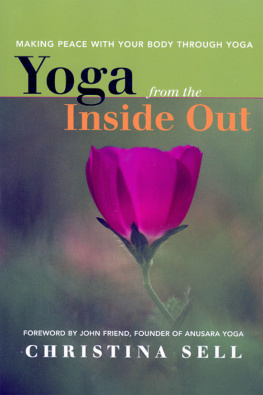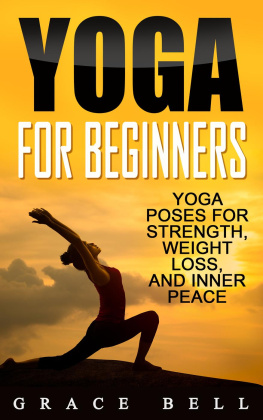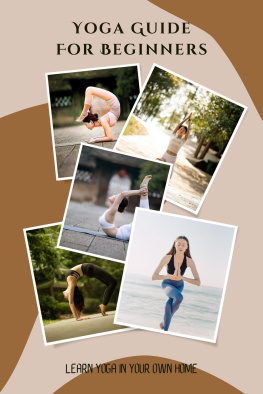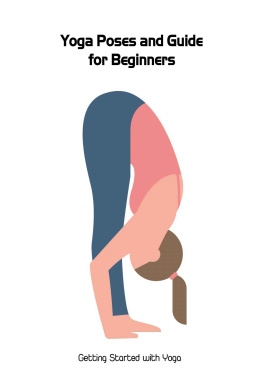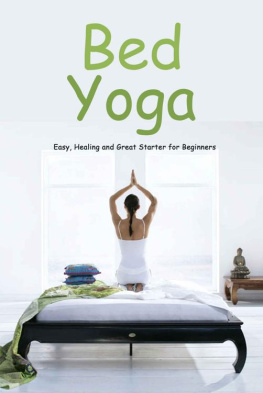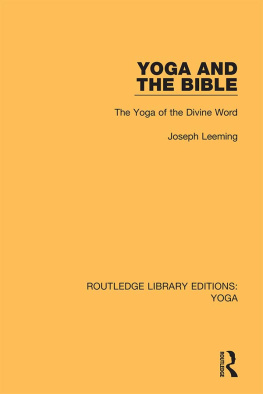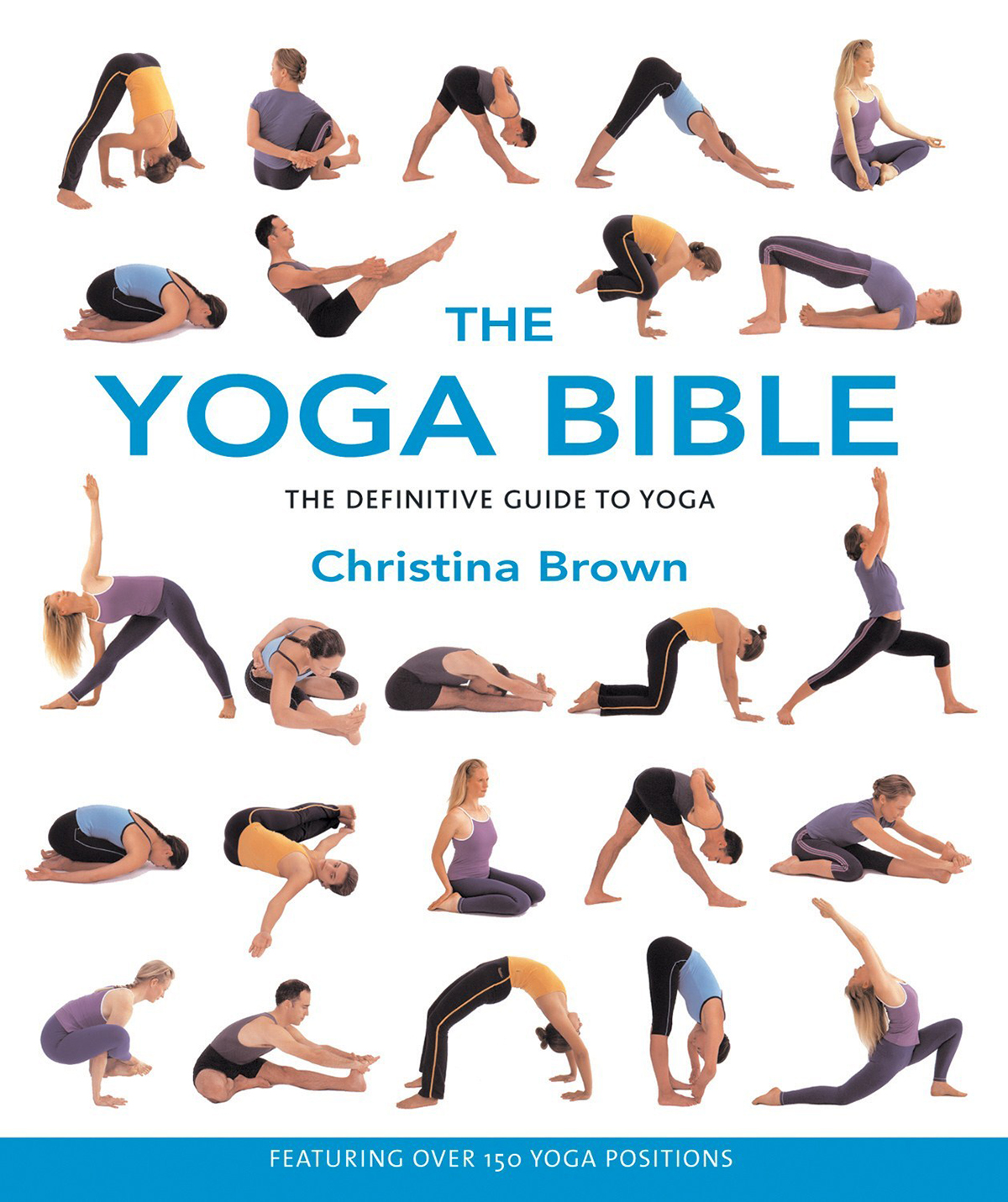Contents
Guide
The
Yoga Bible
The definitive guide to yoga postures
Christina Brown
WALKING STICK PRESS
Contents
Part One
Introduction
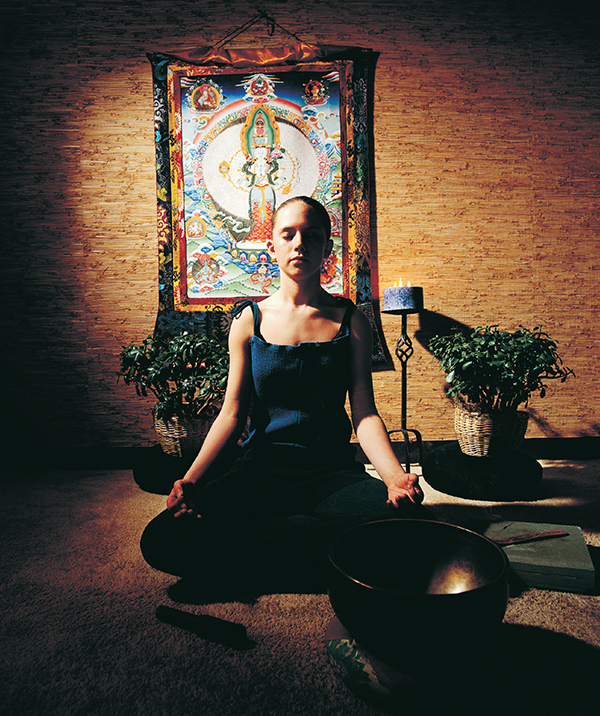
Introduction
Yoga is learning to come back to yourself. Its finding your limits, expanding your boundaries, and being able to truly relax into who you are. Its about taking time to remember who you are but have forgotten while being caught up in the whirlwind of a fast-paced life. On a physical level, as in life, being off balance doesnt feel good. Feeling as though you might topple over at any time is neither safe nor comfortable. One of the reasons yoga has grown dramatically in popularity is that it helps you feel harmonious, integrated, and complete. As you learn about your center in a yoga pose, you practice finding your center in other areas of your life. In fact, dealing with a posture can train you to deal better with life events.
What is Yoga?
An author named Patanjali wrote Yoga-sutra, the first text on the subject of yoga, 2,500 years ago. In it he defined yoga as chitta-vrtti-nirohdah, which means the cessation of the turnings of the mind. The definition of yoga that I use most often is that of stilling the mind. It is the most common modern definition elaborated upon by the eminent teacher T.K.V. Desikachar, who stated that yoga aims ... to direct the mind exclusively toward an object and sustain that direction without any distractions.
Westerners and lay people usually think of yoga as its various physical postures. The name itself comes from the Sanskrit word yuj, which is often translated to unite, to join, or to connect. All these associations imply reintegration and rebalancing, or bringing the self to a harmonious state. Other meanings of yuj include to center ones thoughts, to concentrate on oneself, or to meditate deeply. These tie in perfectly with the definition of yoga previously cited from the Yoga-sutra.
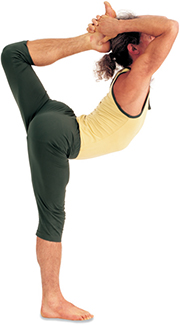
The practice of yoga helps us achieve inner stillness.
Yoga is actually a state of mind. Achieving the goal of stilling the mind is a tall order, so practices have been developed that allow you to move toward this state. Quieting the mind is a rather intangible goal. In contrast, the progress made on accomplishing a yoga posture can be evaluated by alignment, length of stretch, and the length of time it can be held. Its much easier for you to relate to something tangiblethe bodyand then move on to something intangiblethe stillness of the mind. During yoga practice, you begin somewhere known and, using your body and breath, you move toward an unknown. As you open your body and mind with yoga postures and breathing, you become receptive to the delightful and profound experience of inner stillness.

Buddhist meditation techniques can be applied during yoga practice.
While the human mind tends to drift off into thoughts of the past or future, the human body exists only in the present moment. Hatha yoga, a type of yoga that emphasizes strenuous and persistent effort, encourages awareness of the body. Coming back to your body draws your mind back to the present. Then, worries drop away and there are no more shoulds or musts. One of the reasons yoga is so refreshing is that, even if only for an instant, there is only the reality of the present moment. Each time you come to the present moment, you drop a certain amount of baggage. You may pick it up again shortly thereafter, but the point is that you have practiced letting it go. Eventually you will be able to reduce the stress more often and for longer periods of time. In this respect, yoga is like life training. Its practice is a fabulous tool for transformation.
The Yoga-sutra tells us that yoga consists of eight limbsaspects of ). Asana, the use of physical postures, is the practice usually associated with yoga in the West. However, yoga may be anything that gives you a sense of unity, helps you better connect with yourself, and helps you remember who you are. It might be a walk along the beach, a luxurious yawn, or simply taking a single conscious breath.
Any practice that helps you center yourself is important. When you operate from a space that is close to your center, it is easier to be calmer and more focused. Being off balance is a huge source of stress. When things go wrong when you are already off balance, it is like swimming against a strong tide. The farther out you are, the harder it is to swim to shore. Yet, distractions and sensory stimulation often cause you to look outward rather than gazing inward. The real challenge in life is to manage to stay with yourself while at the same time interacting with others; to respond appropriately to people and events while maintaining a sense of connection to yourself.
The Rewards of Yoga
The continued practice of yoga brings medium and long-term rewards for the bodymindthe combined physical, psychological, and spiritual aspects of an individual. It also yields an instant feel-good effect. It just feels better to inhabit a looser, freer body than a contracted, tight, bound-up one. The human body was designed to move freely. By integrating all the parts that make up the whole self, practitioners often have a sense of standing taller and feeling freer. Afterward, they are relaxed and happily at ease. According to Indian philosophy, everything is a combination of three essential qualities called the gunas: sattva (a pure, balanced state), rajas (activity, restlessness), and tamas (inertia, laziness, depression). Most students start a yoga practice either in a restless or hyperactive state, or in a lazy or lethargic state. By the end of most practice sessions they have been brought toward an uplifted sattvic state, both mentally and physically.
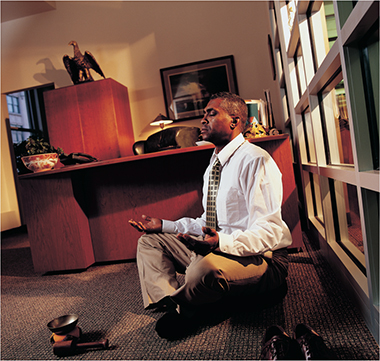
The best yoga practice is when it is integrated into your life.
Yoga brings a sense of expansion on many levels. It allows you to rediscover an internal sense of wholeness that, in todays fast- paced world, is often lost. If you start with a restless body and a hyperactive mind that is difficult to focus, the appropriate practice will work out physical tensions and calm both mind and emotions. If you start with a dull, lethargic bodymind, the right practice will bring back a sense of aliveness to your body, refresh your mind, and give you a sense of peace. Every yoga practice represents a raising of consciousness that creates a reversal of its current state or condition. Whenever you truly come back to yourself, you have the chance to appreciate your essential wholeness.
Yoga gives you the tools to move from passion to the clarity of dispassion, from distress to de-stress, from dis-ease to ease. It unwinds you, moving you from a bound-up, contracted way of existing to a more easygoing, free-flowing way of interrelating. If your yoga practice expands you and gives you joy, then it is the right yoga practice for you.



